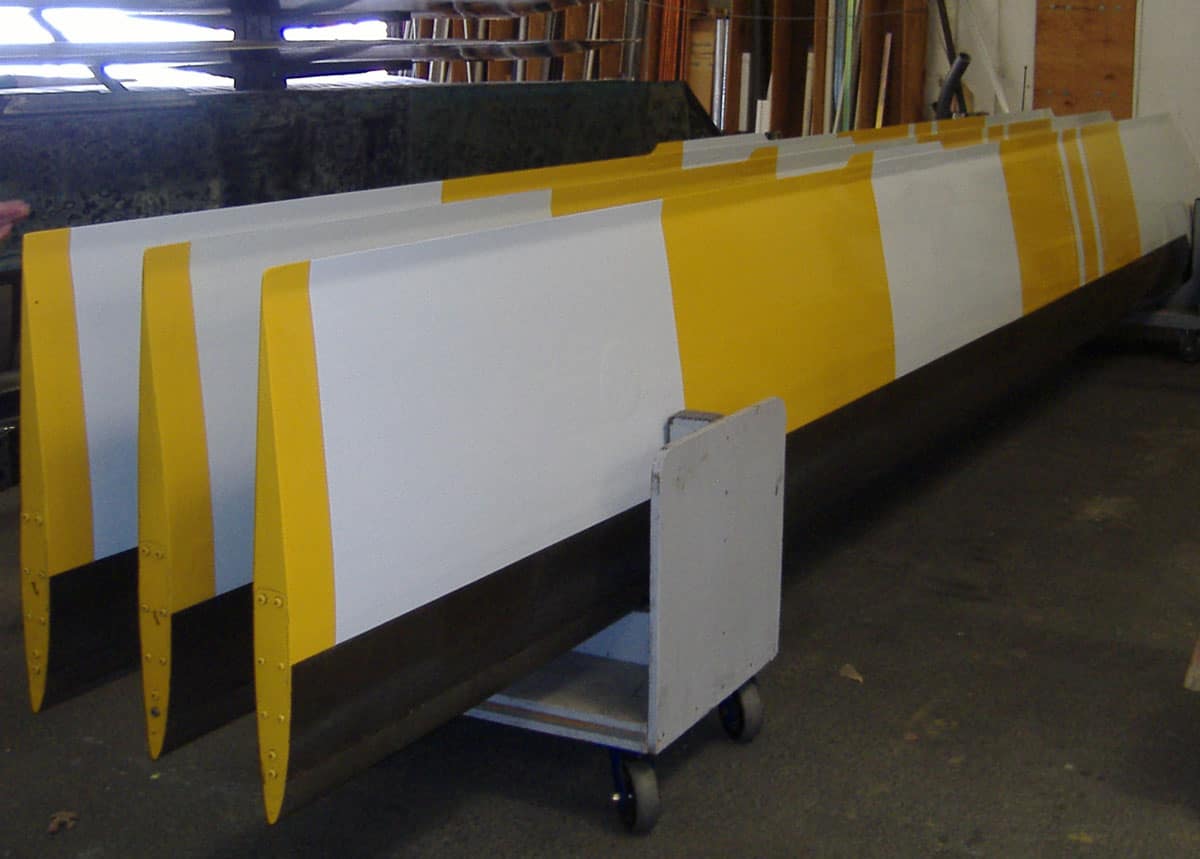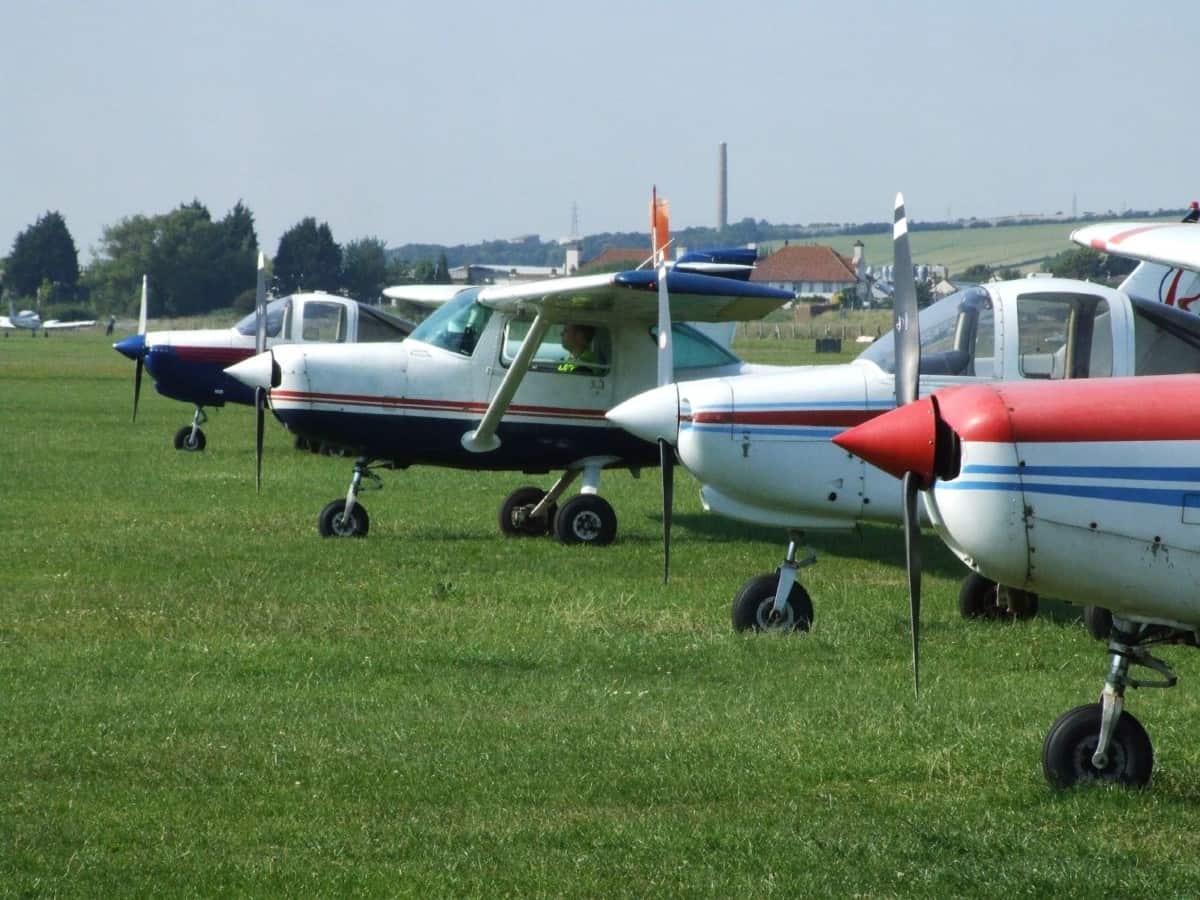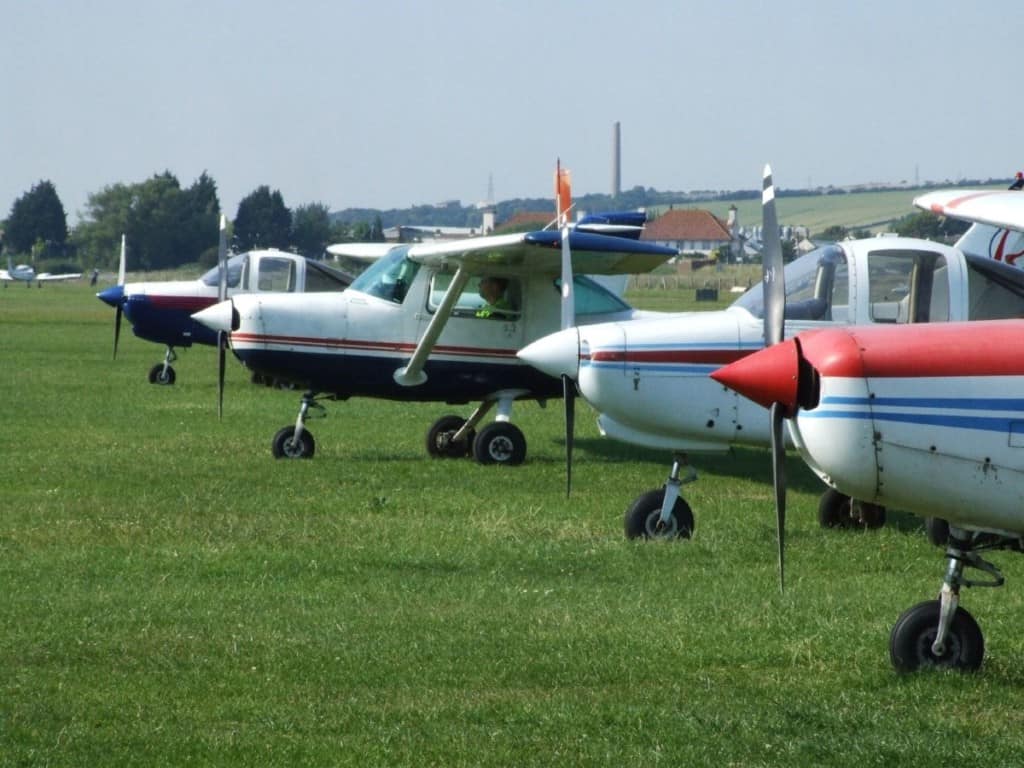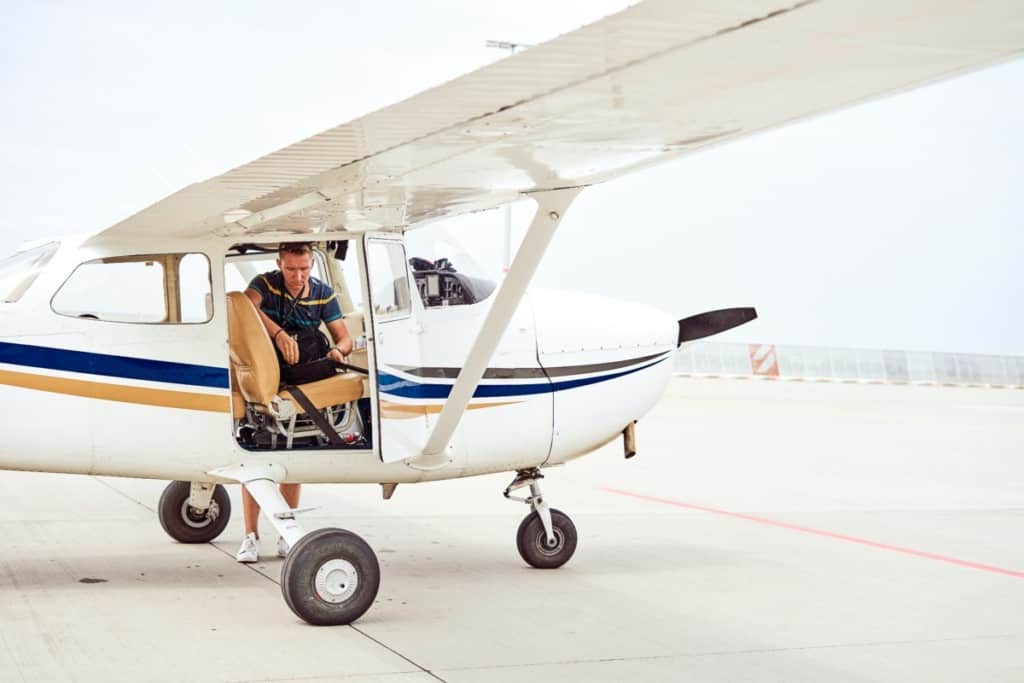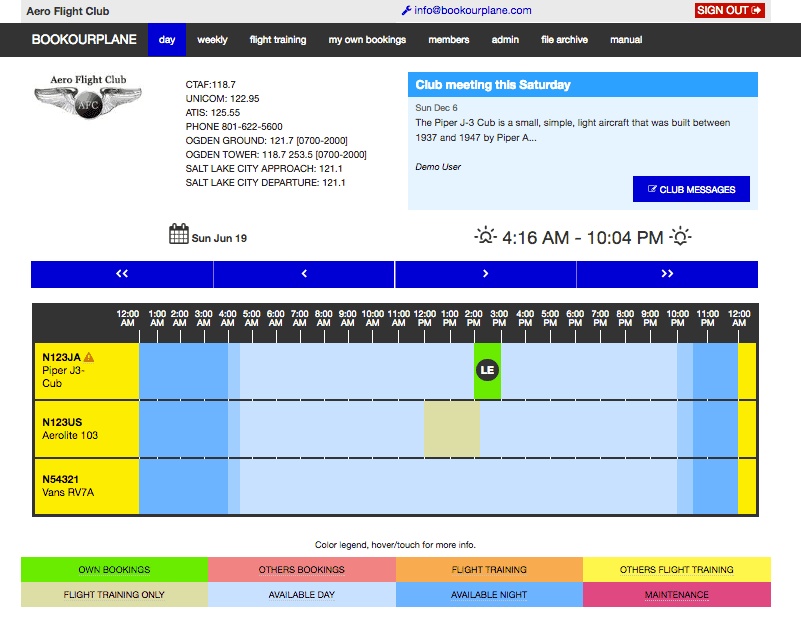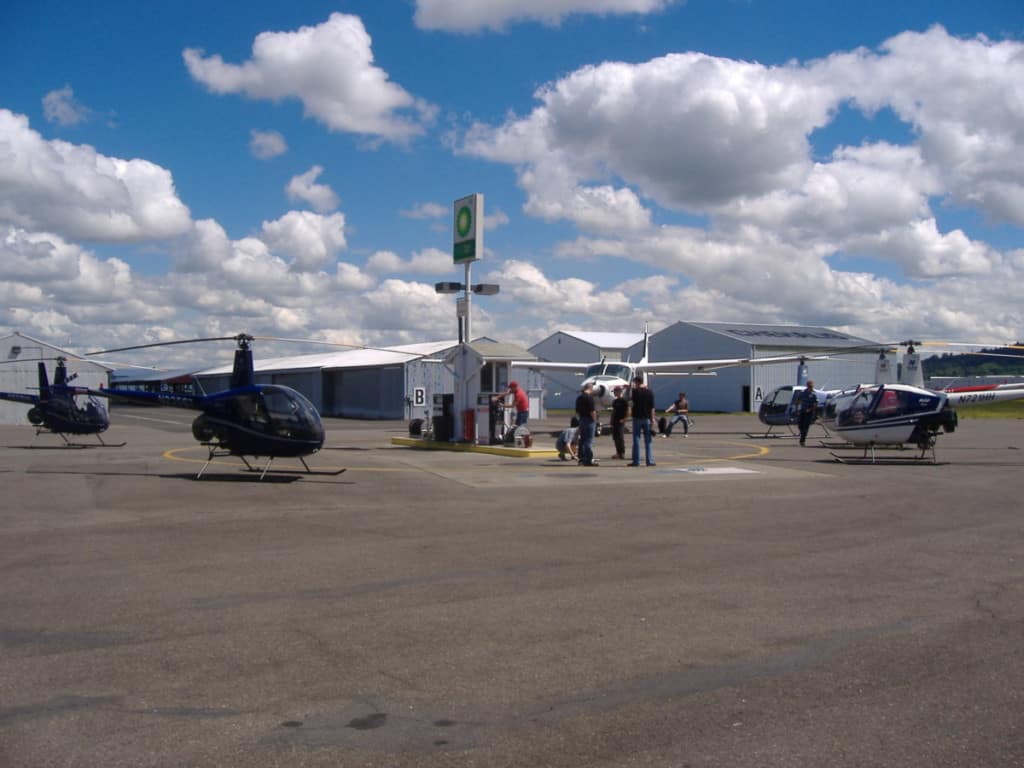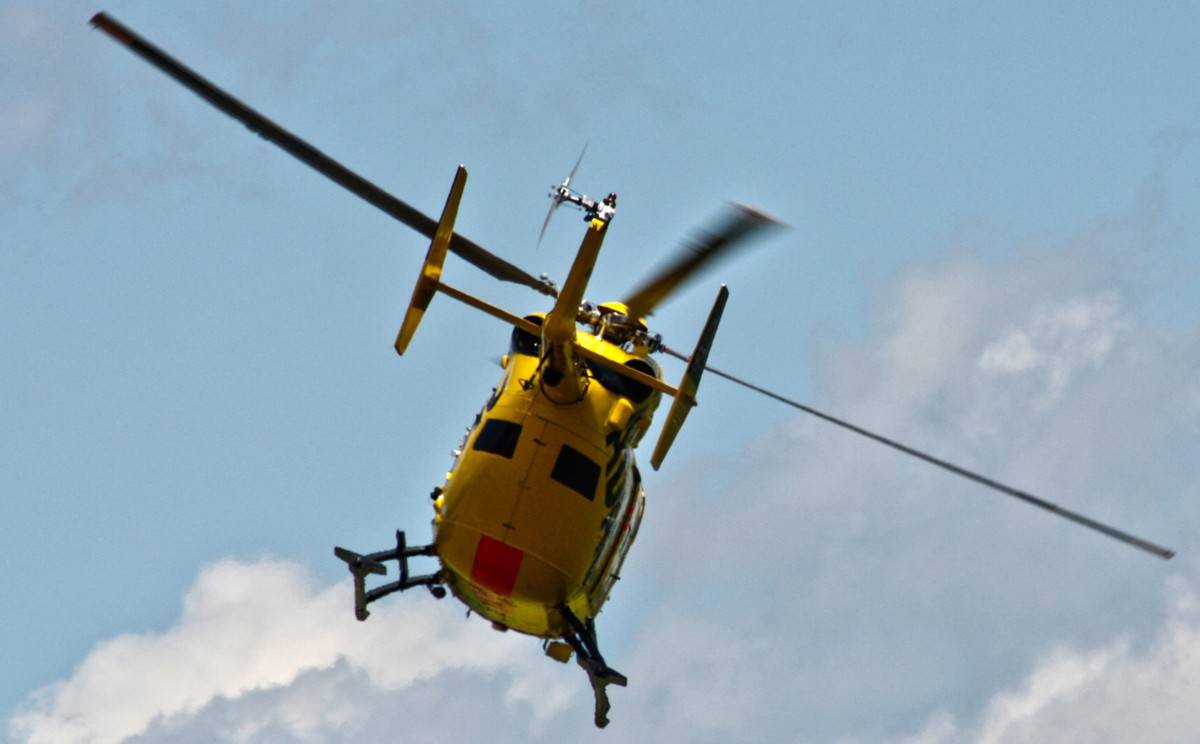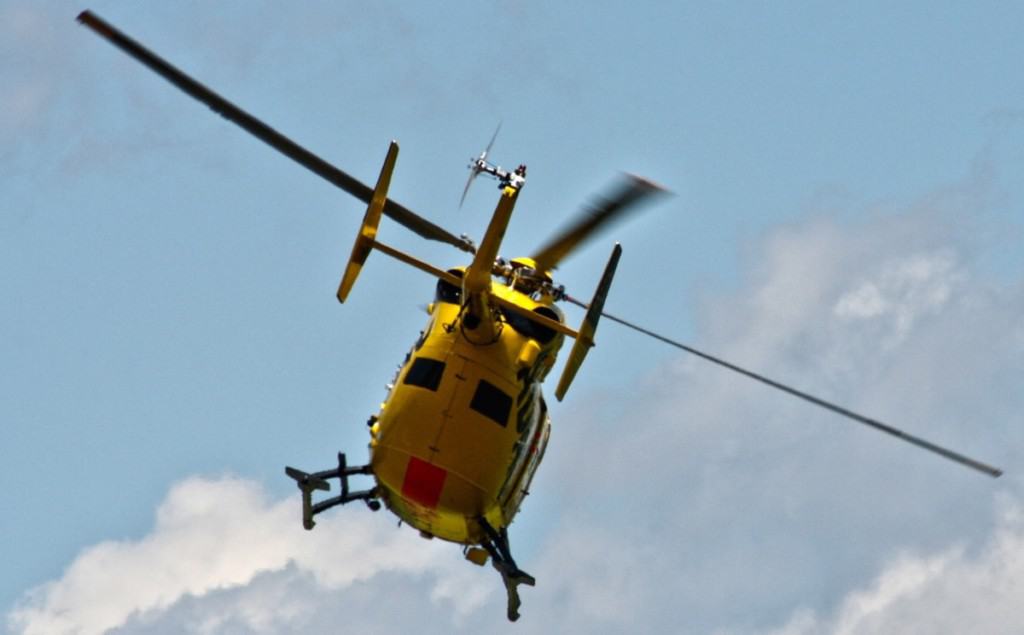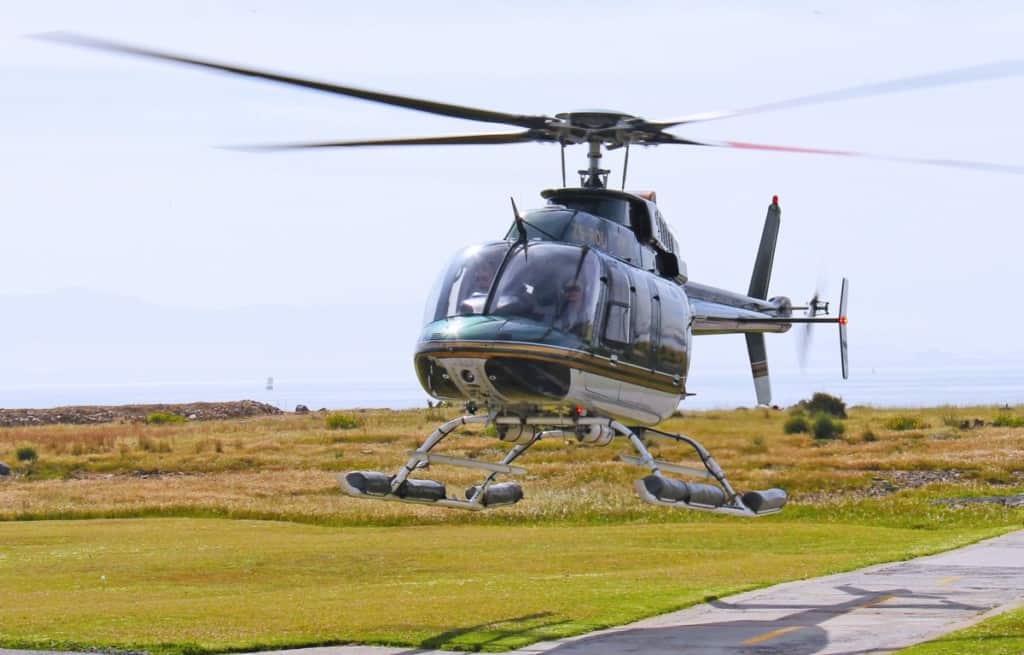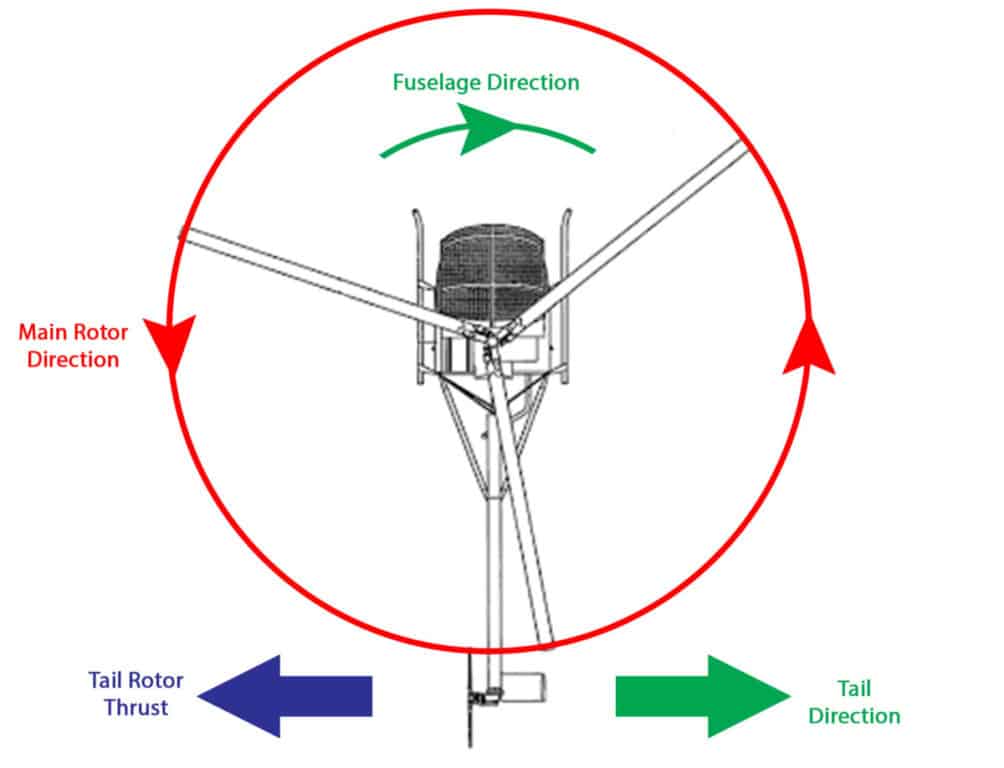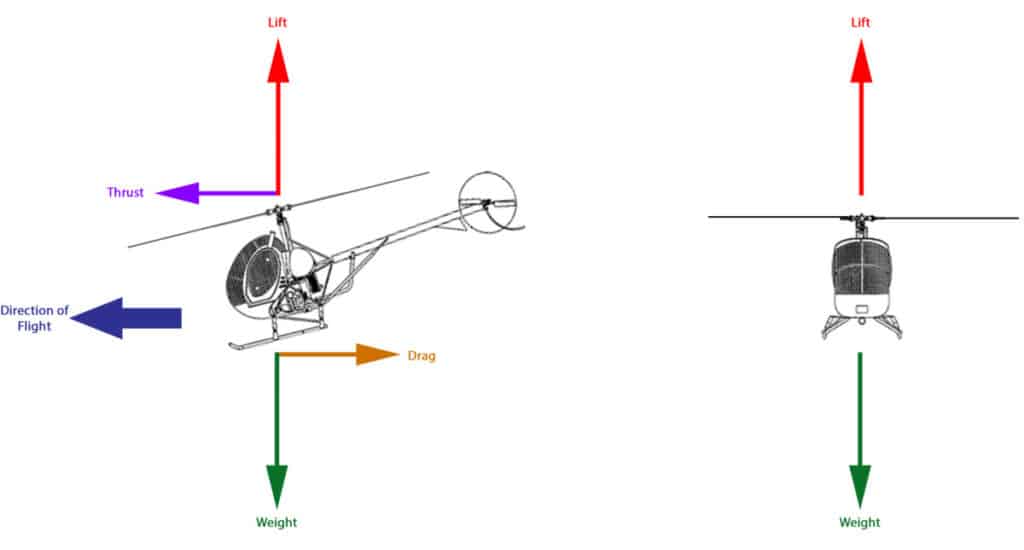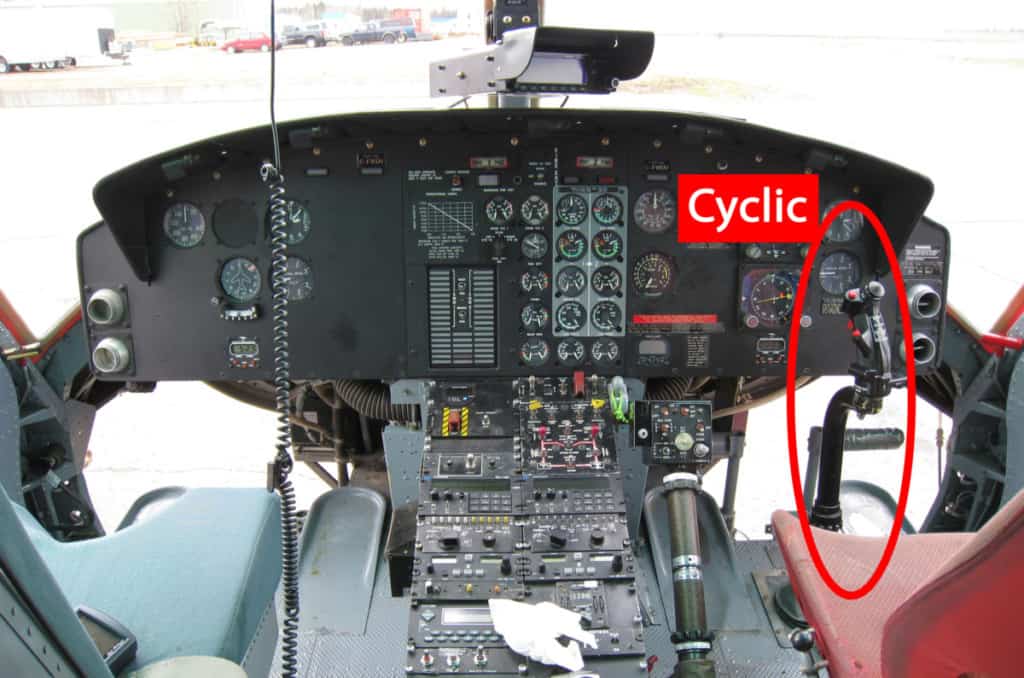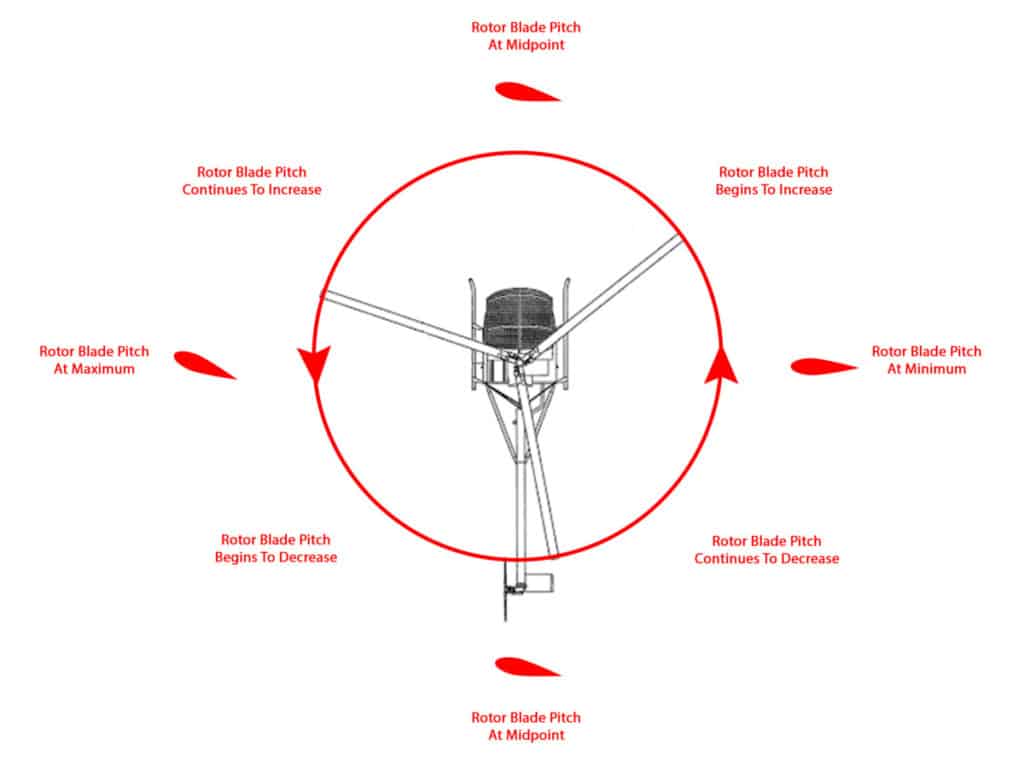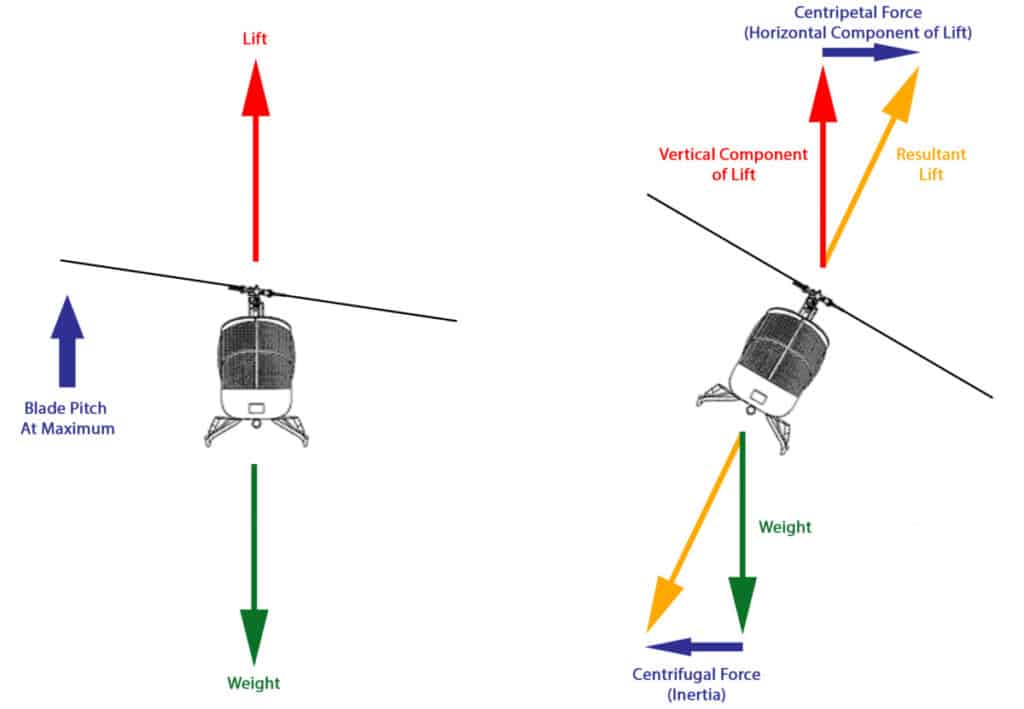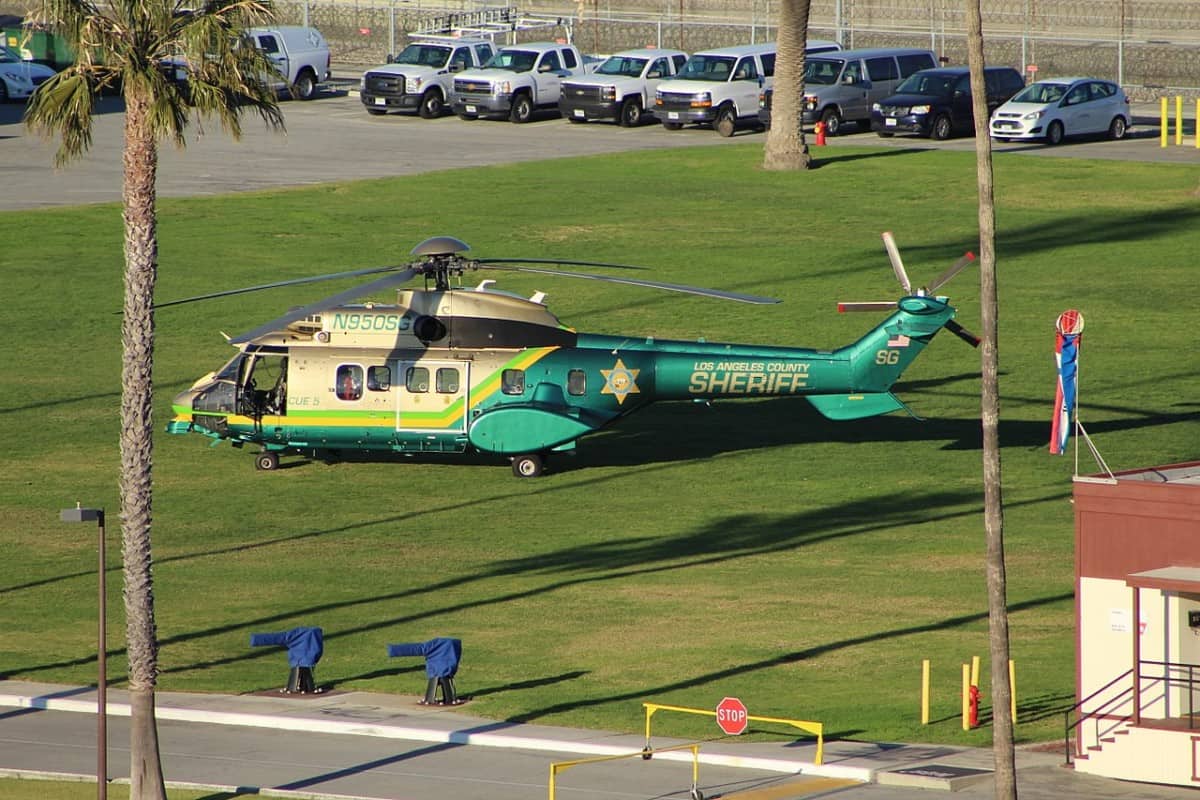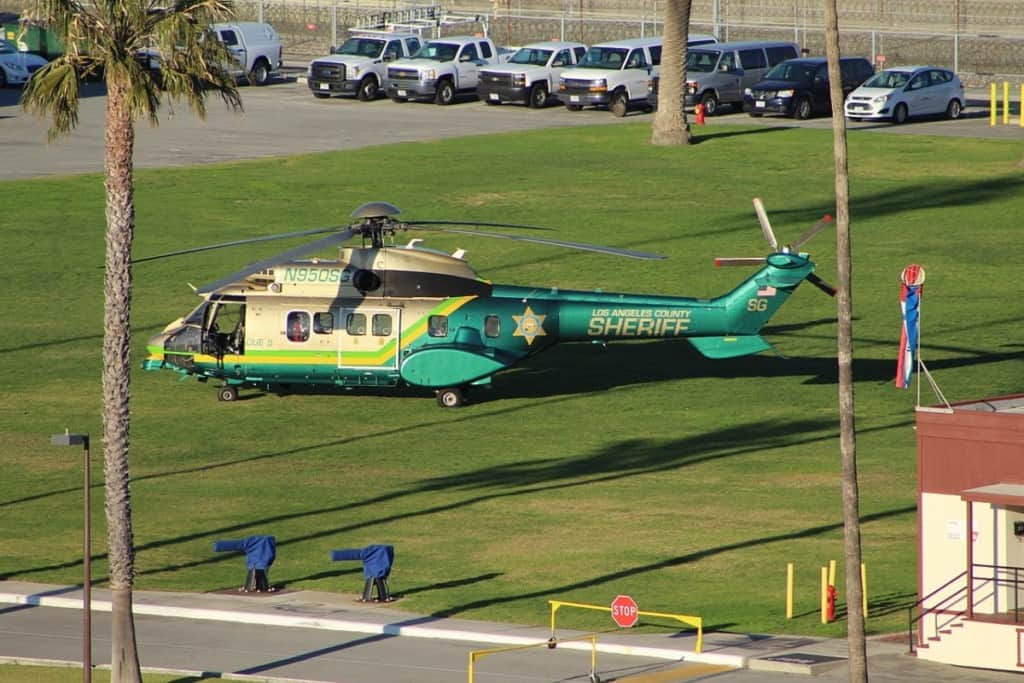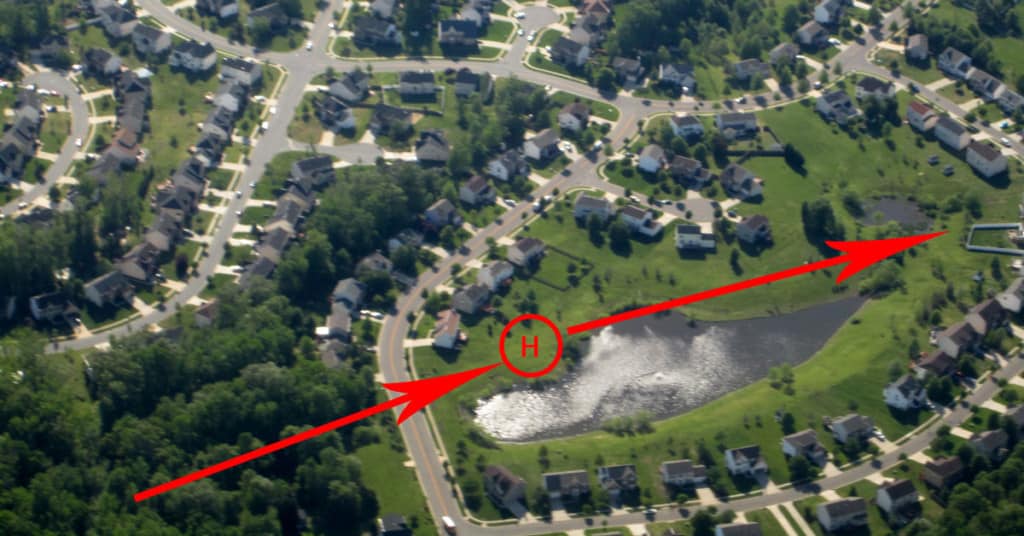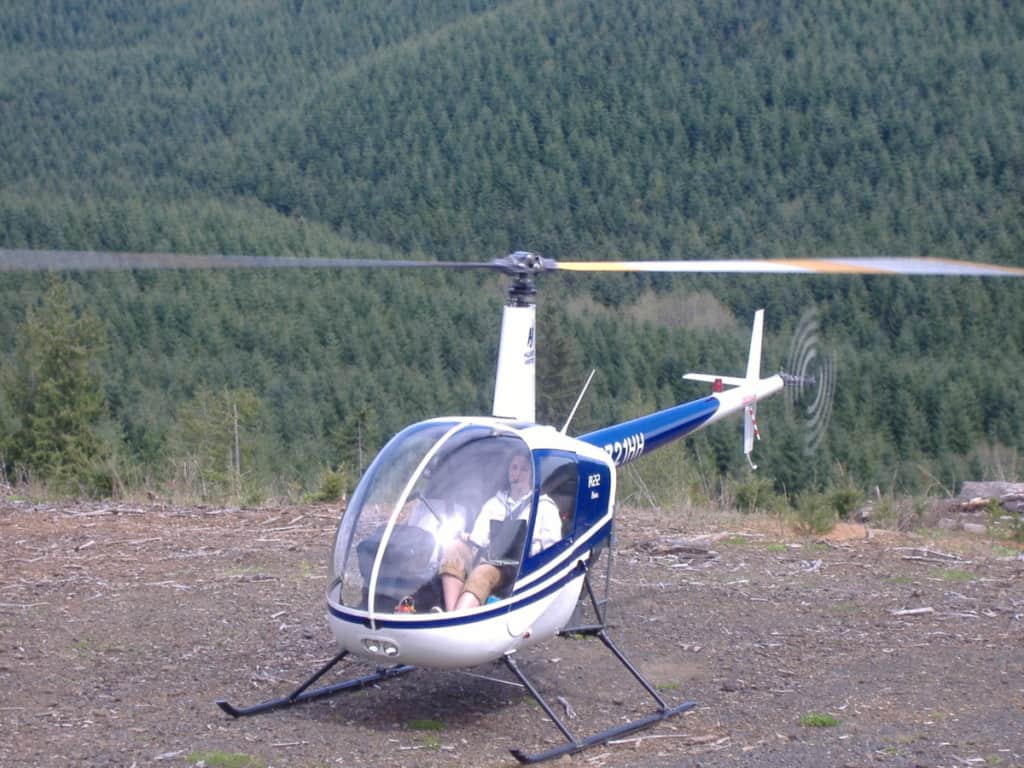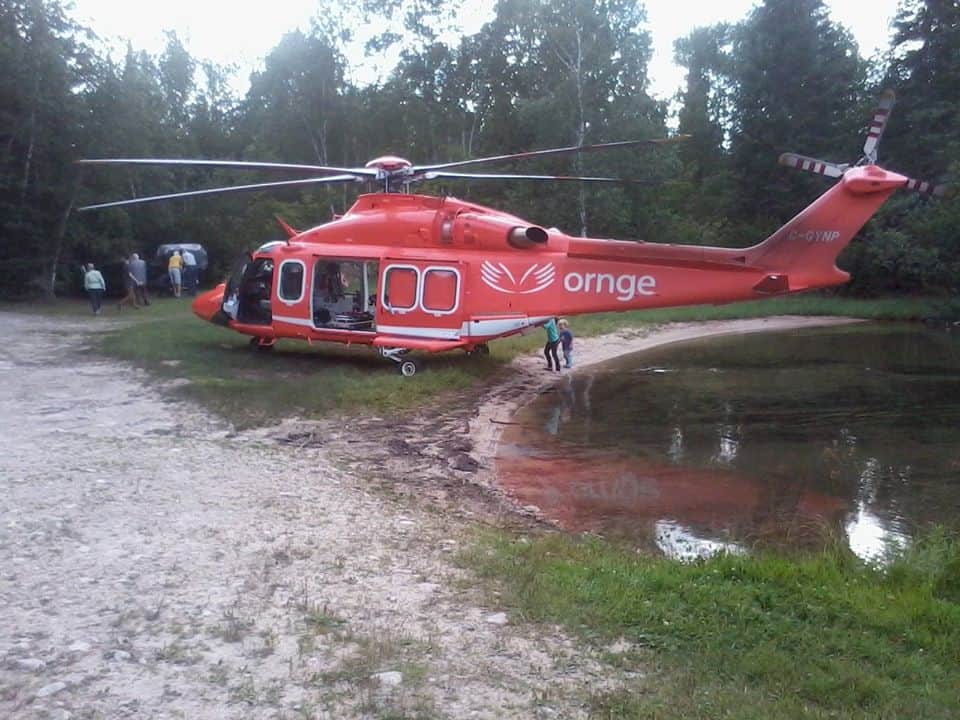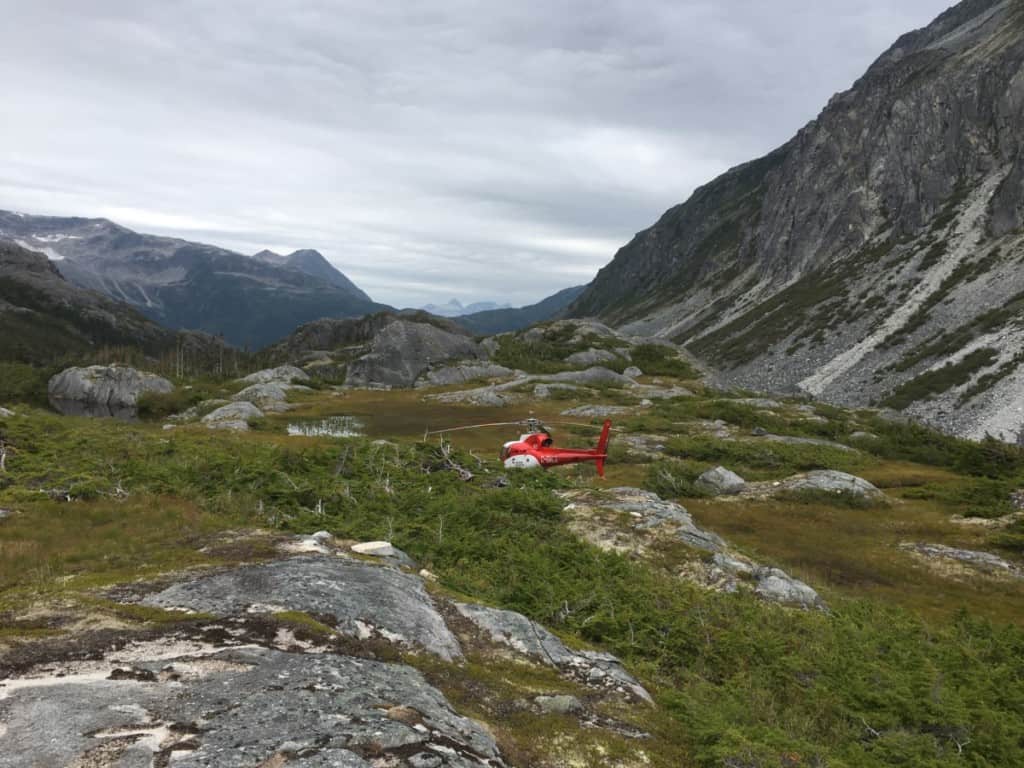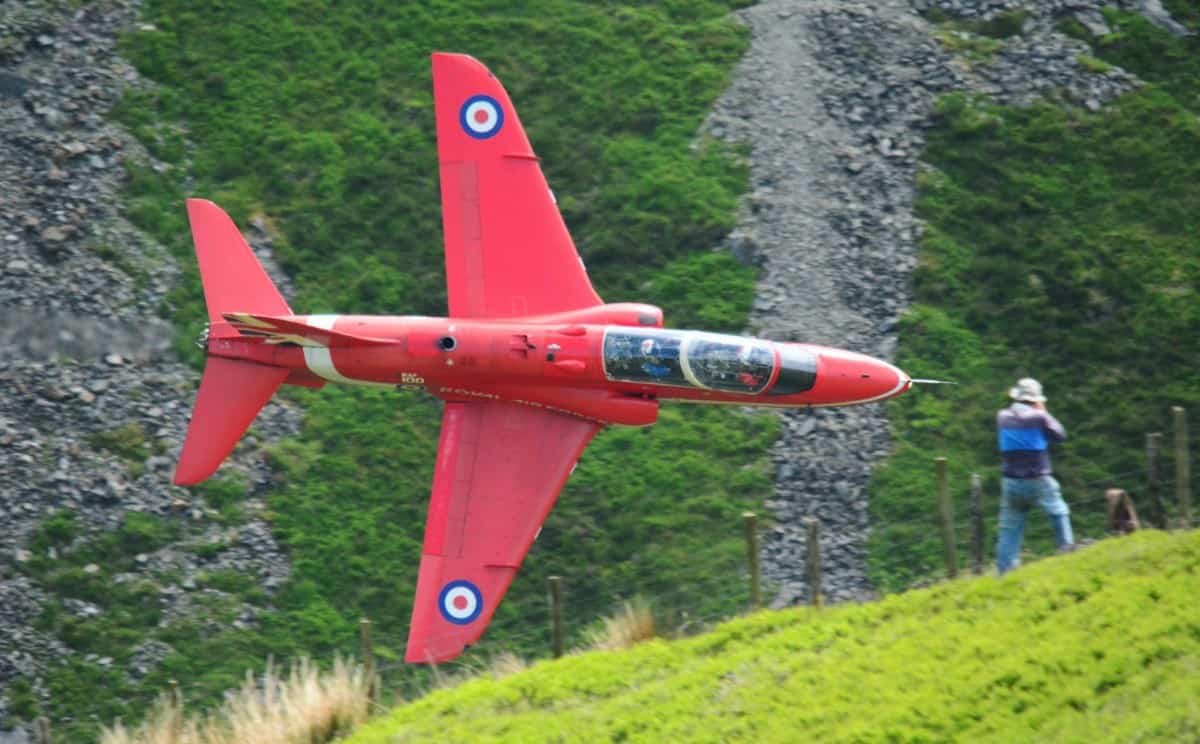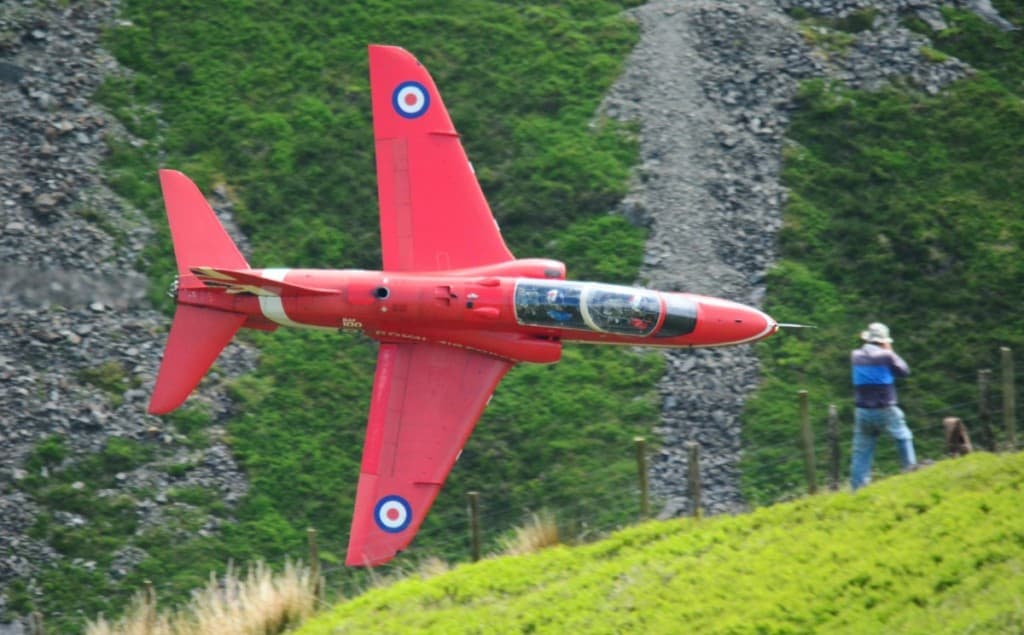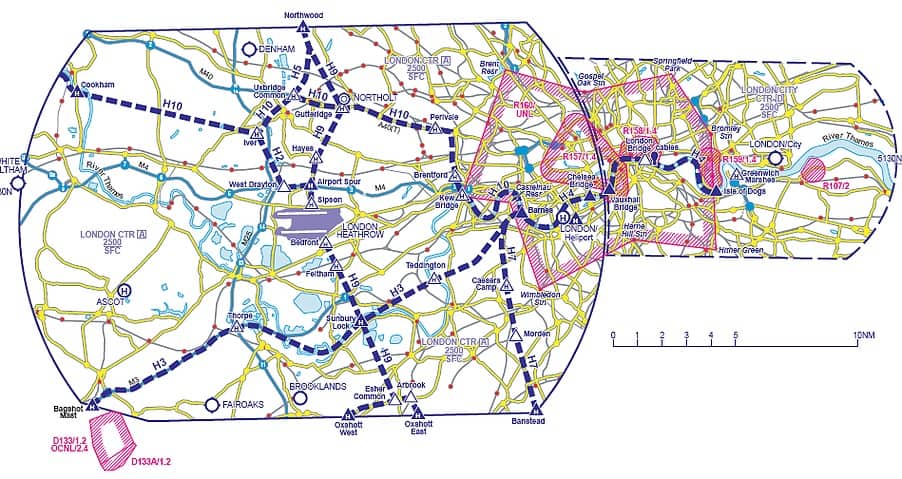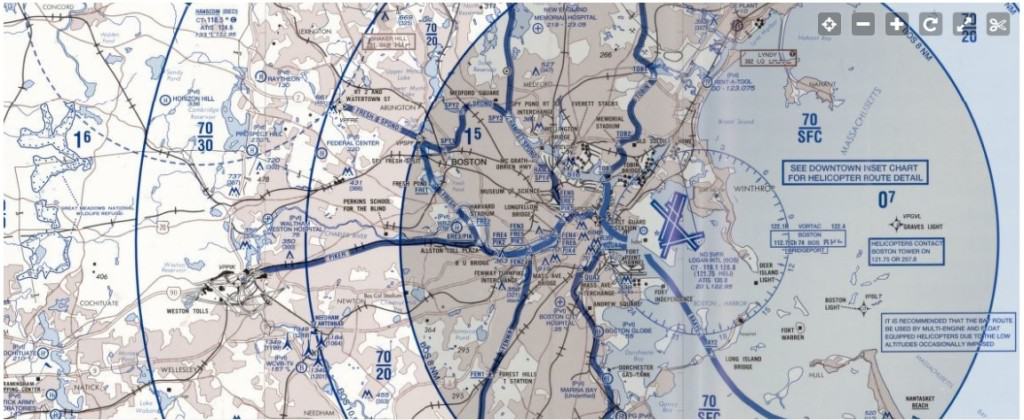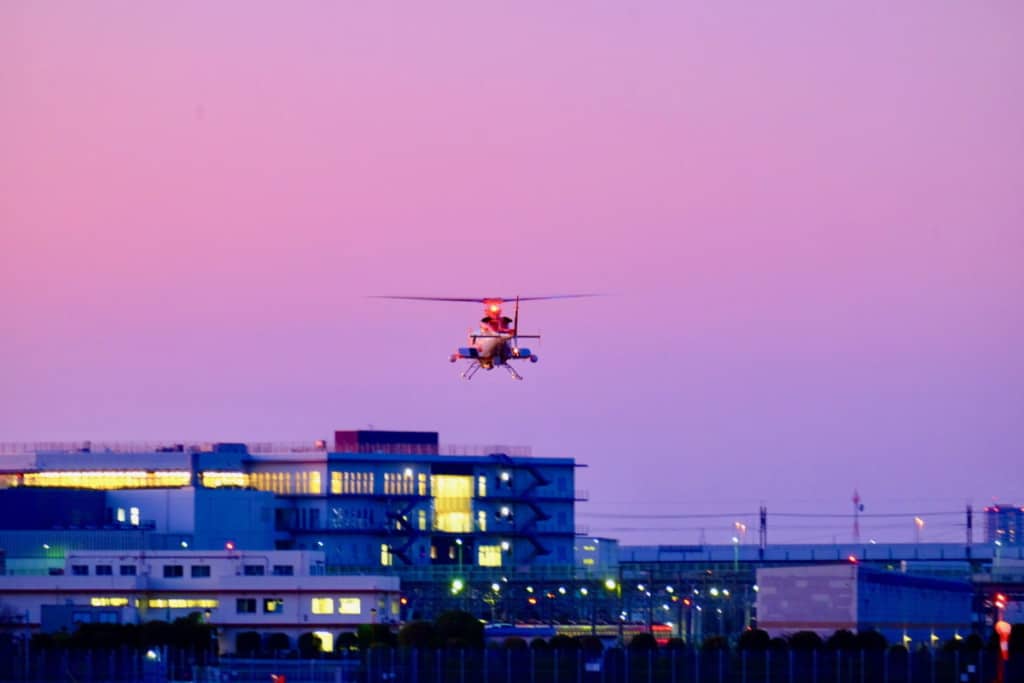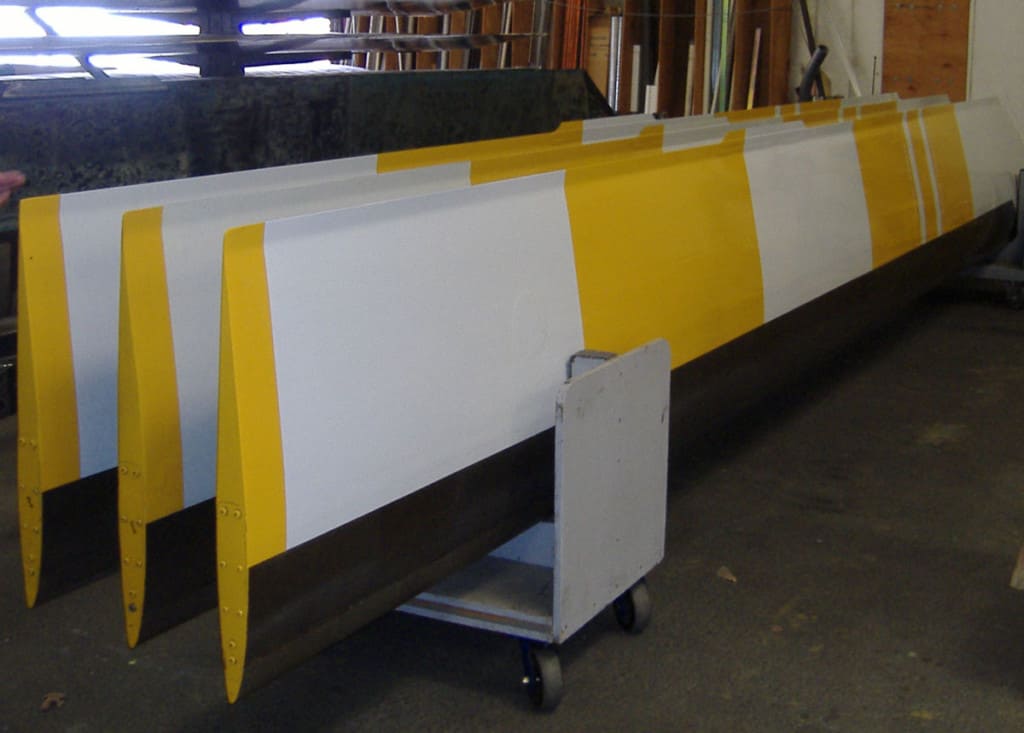
The rotor blade on a helicopter has become a seriously complex feat of engineering but it was never like that. In the early days of rotary-wing flight the materials used were as basic as you could get. But not anymore!
Today’s modern helicopter rotor blades are made of a mixture of materials including Titanium, Carbon Fibre, Fibre Glass, and Stainless Steel. Honeycomb cores make up the majority of the blade with other materials incorporated in certain areas for increased strength and stiffness.
The design of a modern helicopter blade is a very, very complex procedure and every helicopter manufacturer designs their own to try and be the best. In recent decades outside companies like Carson Helicopters and Van Horn Aviation have joined the game to create their own blades to give even better performance.
Read on to find out all about what goes into a helicopter rotor blade.
The Early Rotor Blades
Early helicopters like the famous Bell 47 came with main rotor blades made of wood. The inherent characteristic of wood being strong and flexible provided the perfect material for early rotor blade designs.
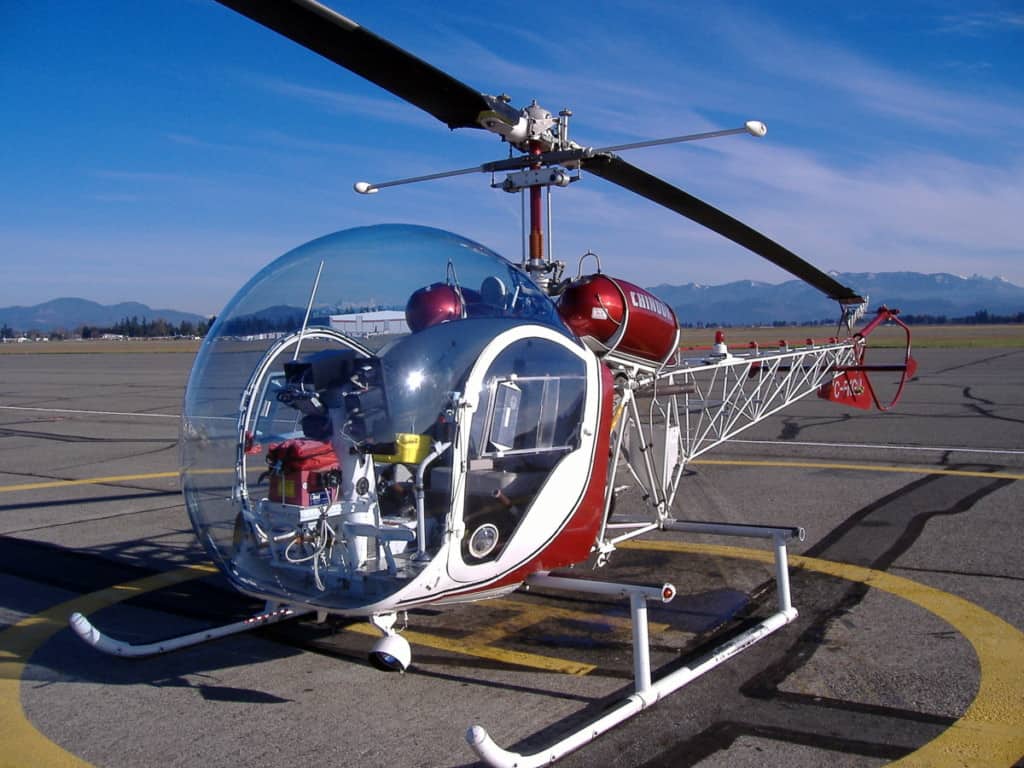
There were problems however as wood can easily be damaged by woodpeckers, dust and stones, and even rain causing the blades to swell leading to severe vibrations from an out-of-balance rotor system.
As the realization of the versatility of the helicopter become more popular, the design and evolution of the airframe and the rotor blades began to move forward.
Materials Development
A rotor blade needs to be strong but also very flexible. You have probably seen that when a helicopter is parked the main rotor blades droop down, but in flight centrifugal force keeps them flat. Not only that, but the blades also flex in flight, especially when affected by turbulence and they need to be able to withstand these loads as well as keeping the helicopter in the air.
To understand the kind of flex and stresses a rotor blade must withstand check out this cool video of an S-56:
To be able to withstand these stresses placed on the blades they need to be designed to be strong in certain areas, but yet flexible in others. Although wood is great at doing this they are limited to the weight they can lift and the speed at which the tips can rotate. This is where new materials were needed.
One of the first advances into rotor blade design was the skinning of the blade’s leading edge with corrosion-resistant steel to aid in erosion control, especially towards the tips of the rotor blade where it is moving the fastest.
The Hiller UH -12B was one of these aircraft to adopt such a design on its blades during the 1950’s.

Join My Newsletter & Get Great Tips, Information and Experiences To Help You Become a Superb Pilot!
Metals
As testing and development into metals really began to take stride it became inevitable that rotor blades would find themselves made of them.
As metals solved some of the problems presented in wooden blades, they presented their own. Constant flexing of certain metals over time can cause it to break. Think of what happens to a paperclip when you twist it back and forth. The other problem with metal is that a crack can rapidly spread causing catastrophic failure – Which is not generally welcomed by pilots!
This was one of the first reasons that rotor blades started to have a time limit on their use. Until this point, wooden blades were considered to last indefinitely!
Honeycombs
The addition of honeycomb technology into rotor blades really helped to improve the design and lifespan of a rotor blade. Used in conjunction with other metals, rotor blades can be produced strong, flexible, light, and cheaper than their advanced composite younger brothers.
The Robinson R22 rotor blade is a great example of this:

- The outer top and bottom skins of the blade are made from an aluminum alloy
- An aluminum honeycomb makes up the core
- A hollow Stainless Steel “D’ section leading edge
- The root of the blade comprises a forged Aluminum Alloy
- All bonded together with adhesive to create the blade
Composites
Composite blades seem to be the way forward for every new blade design from both the aircraft manufacturers and external manufacturers like Carson Helicopters and Van Horn Aviation mentioned earlier.
According to Wikipedia, by definition, Composites are formed by combining materials together to form an overall structure with properties that differ from that of the individual components.
The R22 blade above forms a basic composite blade but now rotor blades are really becoming technical with the materials in which they are being constructed from.
Carbon Fibre, Fibre Glass, Stainless Steel, Aluminum Alloys, Nomex, and Titanium are just some of the materials being placed into blades to create some remarkable results.

For example, the Carson Helicopters Composite replacement blades for the Sikorsky SK61 offer the following improvements over the original 1960’s Sikorsky rotor blade design:
- 1,700 lb thrust increase in hover
- 17 kt. speed increase at 68% torque
- 40% increase of rate of climb at altitude
Source: Carson Helicopters
These are huge performance increases but it just shows what can be done with new materials and modern design techniques!

Learn More…
Try These Articles:
* How Much Fuel Does a Helicopter Burn? Get Your Visa Card Out!
* How Much Can a Helicopter Lift? 20 Helicopters Compared!
Rotor Blade Design
Honeycombs, materials and composites can only take a rotor blade so far, the rest comes down to blade design.
Some of the parameters designers look at when designing a new blade are:
- Produce as much lift as possible
- Reduce drag as much as possible
- Reduce noise as much as possible
- Be as stable as possible
- Be as efficient as possible
- Last as long as possible
- Be as cheap as possible
As you can imagine this is just the tip of the iceberg and blade design is way above the knowledge of most of us reading this, myself included and I have an engineering background.
Just like the materials have evolved, the R&D, computer modeling, testing processes, and data analysis behind modern-day design have just exploded in the last few decades creating some unique-looking blades.
If you have been to an airshow you will know exactly what I am talking about:
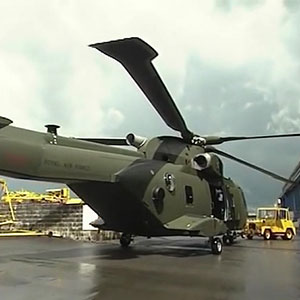
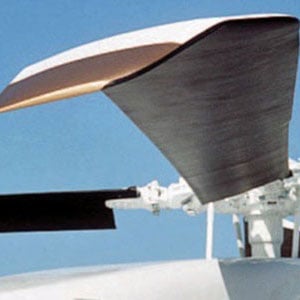
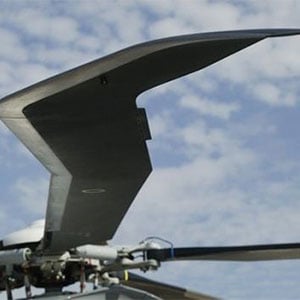
The funky-looking tips on the rotor blades are designed to help offset the problems caused by the tip of the advancing blade rotating near the speed of sound. The main problem is compressibility which not only produces a lot of noise but also reduces lift on that part of the blade.
For more information on rotor blade compressibility check out this article from
Ray Prouty in Rotor&Wing Magazine.
De-Icing Rotor Blades
In recent decades the requirement for helicopters to face their nemesis of ice has been pushed heavily by the military and IFR consumer market. For helicopters operating in the IFR offshore sector in particular, the requirement to fly in all weather has pushed the development in Anti-Icing and De-Icing rotor system technology.
Sikorsky, Airbus, and Agusta have been at the forefront of this technological development and have working systems on their larger aircraft.
The Anti-Icing and De-Icing rotor systems are complex, heavy, and very costly and it requires the entire helicopter to be equipped with additional equipment like engine intake heating systems, heated windshields, ice accretion sensors and a whole plethora of computer systems to control the blade heating systems.
For Example:
The Agusta A139 Anti-Ice system contains blades with electric heating pads in zones in each blade of both the main rotor and tail rotor systems. The electronic systems monitor the icing conditions and pulse the heaters in specific zones at specific intervals to allow the rotor system to shed any built-up ice safely and in a way not to unbalance the rotor head.
It operates at a much more complex level than that but we would be here for hours if I got out my training manuals! But you get the idea.
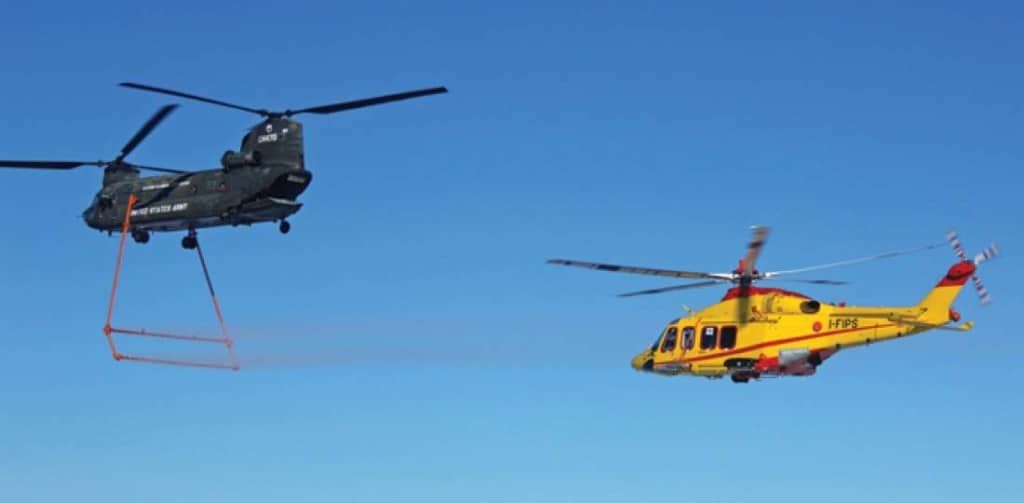
Even with all this blade and computer technology, the trusty human Mk1 eyeball is still the best ice accretion sensor. Here on the A139 is a simple ball used to collect ice which you can see when flying.
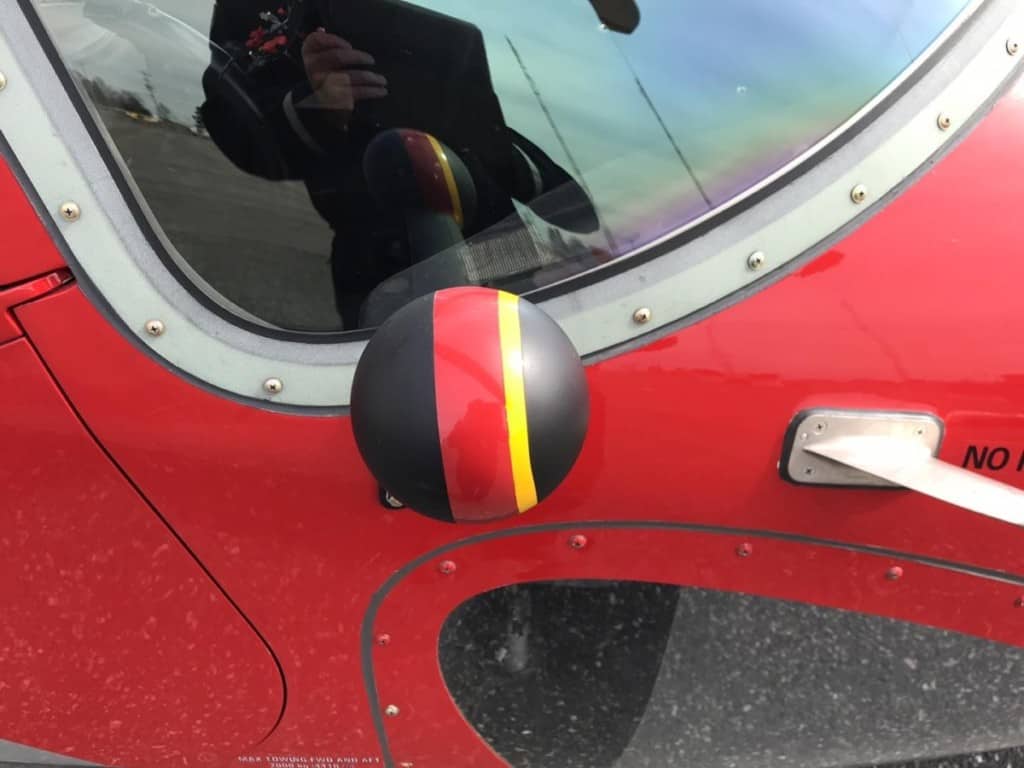
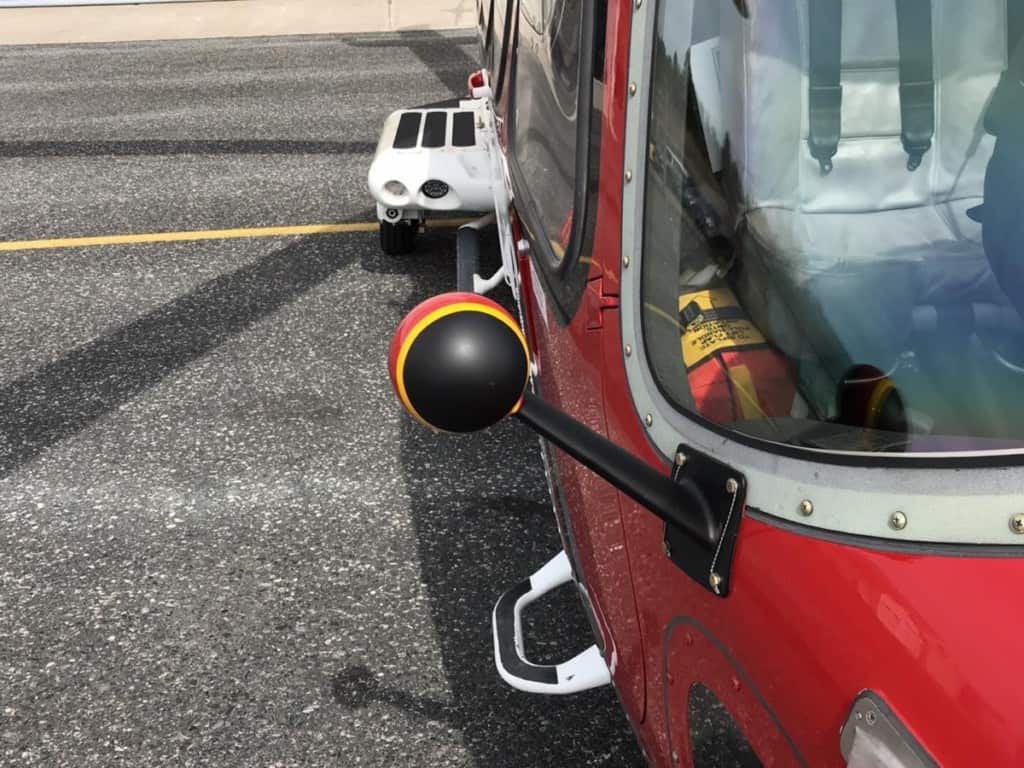
Yellow = Start thinking about leaving the ice-laden weather.
Red = Why have you not turned around already!?
Learn More…
Try These Articles:
* Flying Above Clouds: Can Helicopters Do That?
* Helicopters: Loops, Rolls & Upside Down – Can They All Do It?
How Much Do Rotor Blades Cost?
As you can imagine rotor blades are not cheap, especially for the De-Icing blades, and with a limited service life, the operator can be facing a hefty bill when all blades time out at the same time!
Some rotor blades allow one blade to be changed, have their rotor systems track and balanced and you are good to go. Other blades though may require all the rotor blades to be changed which could lead to a very hefty bill if only one of them develops a fault or gets dinged in the hanger and cannot be repaired!
Rough Prices For Example:
| Robinson R22 Main Rotor Blade | $37,000ea |
| Bell 407 Main Rotor Blade | $42,000ea |
| Bell 206 Van Horn Composite Blades | $80,000/pair |
| A139 Heated Main Rotor Blade | $180,000ea |
| SK61 Carson Helicopters Main Rotor Blade | $200,000ea |
| Bell 214B Main Rotor Blade | $600,000/pair |
To Finish
The manufacture of the helicopter rotor blade has come a long way in the last 70 years, not only in the materials but the design and construction techniques.
Increasing the performance, reducing noise, fuel burn, purchase price, and lifespan is a very tough balancing act for the blade designers. But looking back, the lowly wood blades on the Bell 47, some of which are still flying today, what will the next 70 years of design evolution bring us? I’m excited to watch!

